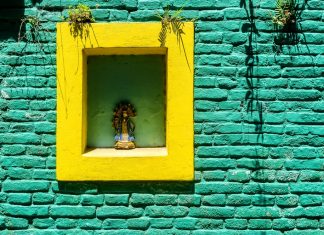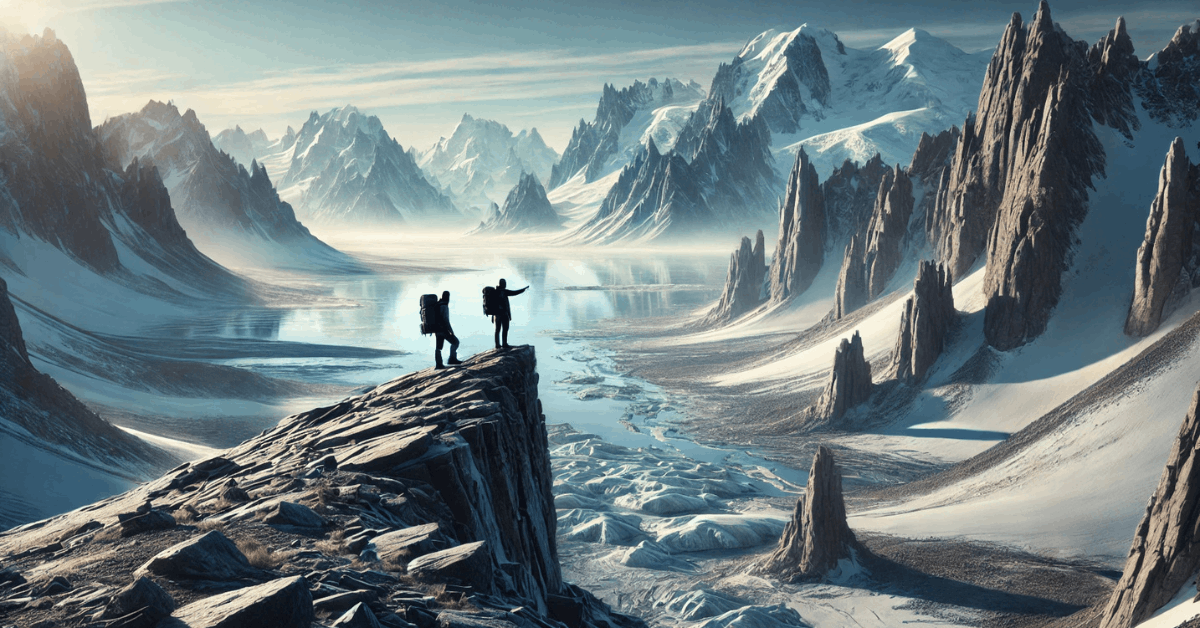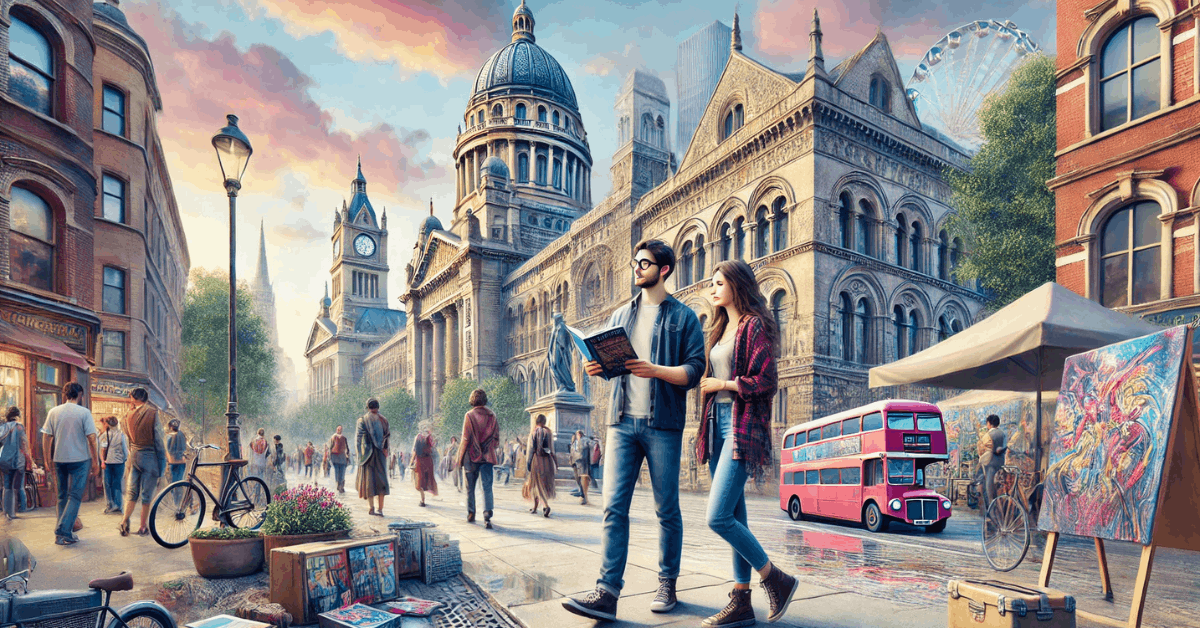If you're looking for a genuinely bone-chilling experience, visiting one of the coldest cities in the world should be on your list. These cities are renowned for their freezing temperatures, some even reaching minus 50 degrees Celsius.
In this article, we'll explore some of the coldest cities in the world, including what makes them unique, their weather patterns, and what life is like for the locals who brave these extreme temperatures. From Yakutsk in Russia to Yellowknife in Canada, we'll take you on a journey to discover some of the most frigid places on the planet.
Bundle up and join us as we explore the world's coldest cities. This article is perfect for seasoned travelers or anyone interested in extreme weather conditions. Take advantage of the opportunity to expand your knowledge and discover new places for your travel bucket list.
A Comprehensive Overview of the Top 11 Coldest Cities in the World
This list of the top 11 coldest cities in the world includes destinations that showcase the extremes of nature's raw power. These cities offer a chance to witness the stunning beauty of winter landscapes and experience the unique cultures and attractions of the world's coldest regions.
People are interested in the world's coldest cities because they offer a chance to experience something unique and awe-inspiring. These destinations provide an opportunity to witness nature's raw power and learn how people have adapted to living in such extreme conditions.
Whether you're a seasoned traveler or simply interested in learning about the world's extreme weather conditions, this article will captivate and inform you. So, get ready to bundle up and join us on a journey to discover the coldest cities in the world.
Beyond the Arctic: Visiting the World's Most Extreme Winter Destinations
This section will provide an informative and insightful guide to these frozen marvels, highlighting their location, climate, culture, lifestyle, and attractions. Each city on our list has a unique story, from the icy plains of Siberia to the frozen shores of Alaska.
Yakutsk, Russia
Yakutsk, Russia, is one of the coldest cities on Earth, with an average temperature of minus 40 degrees Celsius in January. Despite the extreme weather conditions, Yakutsk is a thriving city with a unique culture and way of life.
Locals have adapted to the harsh environment by wearing fur-lined clothing and relying on outdoor markets that sell frozen fish and meat. This city also offers a variety of attractions, including museums, theaters, and festivals. Discover more about Yakutsk and the world's other coldest towns in our guide.
Location and Climate
Yakutsk, Russia, is located in the northeastern region of Siberia and is one of the coldest cities on Earth. The city experiences an extreme subarctic climate, with long, frigid winters and short, mild summers.
In January, the average temperature in Yakutsk is minus 40 degrees Celsius, making it one of the coldest inhabited places on Earth. The city is near the Lena River and surrounded by forests and tundra, further contributing to the harsh climate.
Despite these challenging conditions, the people of Yakutsk have adapted to the environment and have built a thriving city that celebrates its unique culture and heritage.
Culture and Lifestyle
The culture and lifestyle in Yakutsk, Russia, are shaped by the extreme climate and the unique environment in which the city is located. Locals have adapted to the harsh conditions by wearing fur-lined clothing and relying on outdoor markets selling frozen fish and meat.
Despite the challenging weather, Yakutsk is a vibrant city with a rich cultural heritage. The people of Yakutsk celebrate their indigenous roots through traditional festivals and music, and the city is home to museums and galleries that showcase the region's history and art.
Visitors to Yakutsk can also experience the local lifestyle through activities such as dog sledding, ice fishing, and snowmobiling. Our guide explains more about the culture and lifestyle of Yakutsk and the world's other coldest cities.
Attractions
Yakutsk, Russia, is a fascinating destination with a unique culture and way of life. Despite its extreme climate, the city offers a variety of attractions for visitors to enjoy.
Some top things to see and do in Yakutsk include exploring its museums, theaters, and galleries, attending local festivals, and experiencing traditional activities such as dog sledding and ice fishing. Here is a list of the top attractions in Yakutsk:
- The National Art Museum of Sakha showcases the Sakha people's art and culture, with exhibits ranging from traditional crafts to contemporary art.
- The Mammoth Museum features a collection of mammoth tusks and bones, as well as exhibits on the region's history and ecology.
- The State Russian Drama Theater - hosts performances of classic and contemporary Russian plays and productions in the Sakha language.
- The Old Town of Yakutsk - offers a glimpse into the city's past, with well-preserved wooden buildings and traditional architecture.
- The Yakutsk Central Market - is a bustling marketplace that sells various goods, including frozen fish and meat, traditional crafts, and clothing.
- The Kingdom of Permafrost - is an underground ice cave that features ice sculptures and exhibits on the region's geology and ecology.
- The Lena Pillars Nature Park - is a stunning natural landmark that features towering rock formations along the Lena River.
- The Yakutsk Regional Museum of Local Lore - showcases the history and culture of the Yakutsk region, with exhibits on everything from geology to traditional clothing.
- The Chochur Muran Ethnographic Complex - is a museum and cultural center that celebrates the culture and traditions of the Sakha people.
- The Atlasov Island Hot Springs are natural hot springs located on a remote island off the coast of Yakutsk. They offer a unique and relaxing way to experience the region's natural beauty.
Harbin, China
Harbin, China, is one of the coldest cities in the world, with an average temperature of minus 17.1 degrees Celsius in January. The city is known for its annual Ice and Snow Festival, which features massive ice sculptures and attracts millions of visitors yearly.
Despite the extreme weather conditions, Harbin is a bustling city with a rich history and culture. Its unique architecture, influenced by Russian and Chinese styles, adds charm to the town. Visitors can also explore local markets, museums, and parks or stroll along the scenic Songhua River.
Location and Climate
Harbin, China, is located in the country's northeastern region, near the border with Russia. The city is situated on the Songhua River, which freezes over during the winter months.
Harbin has a subarctic climate, with long, bitterly cold winters and short, mild summers. In January, the average temperature in Harbin is minus 17.1 degrees Celsius, making it one of the coldest cities in the world.
Despite the extreme climate, the people of Harbin have adapted to the environment and have built a thriving city that celebrates its unique history and culture. Visitors can experience the city's charm through its architecture, festivals, and local attractions.
Ice and Snow Festival
The Ice and Snow Festival is one of the most famous attractions in Harbin, China. The festival is held annually in January and features massive ice sculptures, intricate snow carvings, and colorful light displays.
The festival covers a massive area of more than 600,000 square meters, attracting millions of visitors worldwide yearly. The festival's main attraction is the Harbin Ice and Snow World, which comprises hundreds of towering ice sculptures and buildings.
Visitors can also enjoy ice skating, snowboarding, other winter sports, traditional Chinese performances, and cuisine. The festival is a testament to the ingenuity and creativity of the people of Harbin, who have learned to embrace their extreme climate and turn it into a source of pride and beauty.
Attractions
Harbin, China, is a fascinating city with a rich history and culture. Despite its extreme climate, the city offers a variety of attractions for visitors to enjoy. Here are some of the top things to see and do in Harbin:
- Harbin Ice and Snow World - a winter wonderland of ice and snow sculptures featuring stunningly intricate designs and colorful lights.
- Central Street - a pedestrian street lined with historic Russian buildings, cafes, and shops.
- St. Sophia's Church - a beautiful Russian Orthodox church that has become a symbol of the city.
- Sun Island - a scenic park located on an island in the Songhua River, featuring gardens, lakes, and a ski resort.
- Harbin Polarland - an aquarium and wildlife park featuring Arctic animals, including polar bears, penguins, and beluga whales.
- Zhaolin Park - is a popular park known for its ice lantern festival, which features thousands of illuminated ice sculptures.
- Heilongjiang Provincial Museum - a museum showcasing the history and culture of Heilongjiang province, with exhibits on everything from geology to traditional crafts.
- Harbin Grand Theater - a modern theater complex that hosts performances of traditional Chinese operas, ballets, and other cultural events.
- Harbin Jewish Synagogue - a historic synagogue that tells the story of the Jewish community in Harbin during the early 20th century.
- Harbin Siberian Tiger Park - a wildlife park home to over 500 Siberian tigers and other animals such as lions, bears, and wolves.
Yellowknife, Canada
Yellowknife, Canada, is one of the top 10 coldest cities in the world, with temperatures reaching as low as minus 51 degrees Celsius in the winter. Despite the extreme climate, Yellowknife is a vibrant city with a rich cultural heritage and a thriving tourism industry.
The city is located on the shores of Great Slave Lake, the deepest lake in North America, and is surrounded by breathtaking wilderness. Visitors to Yellowknife can experience the northern lights, go dog sledding or ice fishing, and learn about the local Indigenous culture.
Despite the challenges of living in such a cold environment, the people of Yellowknife have created a warm and welcoming community that embraces its unique location and culture.
Location and Climate
Yellowknife, Canada, is located in the Northwest Territories near the Arctic Circle. The city is on the northern shore of Great Slave Lake, the deepest lake in North America. Yellowknife has a subarctic climate, with long, bitterly cold winters and short, mild summers.
The average temperature in January is minus 29 degrees Celsius, and the city is often covered in a thick layer of snow and ice. Despite the extreme weather conditions, Yellowknife is a popular destination for outdoor enthusiasts and adventure seekers who want to experience the raw beauty of Canada's north.
Visitors can enjoy skiing, snowmobiling, ice fishing, and other winter sports or take a tour to see the spectacular northern lights.
Northern Lights
Yellowknife, Canada, is renowned as one of the best places in the world to see the stunning display of the northern lights, also known as the aurora borealis. With its location directly under the "auroral oval," a region where aurora activity is most intense, Yellowknife offers a front-row seat to this natural phenomenon.
Visitors can take guided tours or venture out on their own to find the perfect viewing spot and watch in awe as the sky comes alive with swirls of green, pink, and purple lights. It's a truly unforgettable experience that draws visitors from all over the world.
While the northern lights are undoubtedly the star attraction, Yellowknife also offers a range of other winter activities, such as dog sledding, snowmobiling, and skiing, making it the perfect destination for adventure seekers and nature lovers.
Attractions
Yellowknife, Canada, is a winter wonderland that offers a range of attractions and activities to suit all interests. Beyond the breathtaking northern lights, here are some of the top things to see and do in Yellowknife:
- Prince of Wales Northern Heritage Centre: his museum offers an in-depth look at the history and culture of the Northwest Territories, with exhibits on Indigenous art, wildlife, and more.
- Ice Fishing: Yellowknife's frozen lakes offer the perfect opportunity to try ice fishing, with guided tours and equipment rentals available.
- Dog Sledding: experience the thrill of racing through the snow with a team of sled dogs led by experienced guides who will teach you the ins and outs of mushing.
- Aurora Village: This purpose-built facility offers a range of northern light viewing experiences, including cozy cabins with panoramic sky views.
- Snowmobile Tours: get your adrenaline pumping with a guided tour of the surrounding wilderness, taking in the stunning scenery and wildlife.
Yellowknife's remote location and pristine wilderness make it ideal for those seeking an escape from the hustle and bustle of city life. With its unique blend of natural beauty and cultural richness, it offers something for everyone.
Also read: Top 10 Best African Islands to Visit
Oymyakon, Russia
Oymyakon, Russia, has earned its place as one of the coldest inhabited places on Earth due to its frigid climate and shallow temperatures. The village has become renowned for its extreme weather conditions, with an average winter temperature of minus 50°C.
This harsh environment poses significant challenges to those who call it home, including difficulties with transportation and infrastructure. Despite these challenges, the people of Oymyakon have adapted to their surroundings, with many finding ways to survive and thrive in this cold and unforgiving landscape.
While visiting Oymyakon, one can experience the unique culture and lifestyle of those who live in such extreme conditions, which is truly unforgettable and humbling.
Location and Climate
Oymyakon is located in the northeast region of Siberia, in the Sakha Republic of Russia. The village is 750 meters above sea level and is situated in a valley surrounded by mountains. The area experiences a subarctic climate, with long, cold winters and short, cool summers.
Temperatures can drop as low as minus 67°C, and the area is known for its extreme temperature fluctuations, which can change rapidly from hour to hour. The harsh climate presents significant challenges to those who live in Oymyakon, including issues with transportation and access to essential resources.
However, it also offers visitors a chance to experience the raw power of nature and witness the incredible resilience of those who call this place home.
Lifestyle and Culture
Oymyakon's population primarily comprises the Yakut people, who have adapted to the harsh living conditions and embraced a nomadic lifestyle. The locals rely heavily on reindeer herding and fishing for sustenance, and traditional practices such as shamanism and folklore remain an essential part of their cultural identity.
Despite the extreme weather, Oymyakon residents are known for their warmth and hospitality. They welcome visitors with open arms and offer a glimpse into their unique way of life.
Overall, Oymyakon offers a rare opportunity to experience a lifestyle and culture vastly different from the modern world and gain a deeper appreciation for the resilience and adaptability of the human spirit in the face of adversity.
Attractions
Oymyakon, Russia, maybe a challenging place to live, but its unique attractions make it a destination for adventurers seeking the ultimate winter experience. Here are some of the top attractions to visit in Oymyakon:
- Lena Pillars: located near Oymyakon, this UNESCO World Heritage Site features towering cliffs of layered rock formations that the Lena River has eroded for millions of years. Visitors can take a boat tour to see the pillars up close and learn about the region's geological history.
- Reindeer herding: The Indigenous Yakut people have been herding reindeer for centuries, and visitors to Oymyakon can observe and even participate in traditional herding practices. It's a unique opportunity to learn about the Yakut culture and the importance of reindeer to their way of life.
- Ice fishing: despite the extreme cold, fishing is popular in Oymyakon, particularly ice fishing. Visitors can try catching fish through a hole in the ice, with the chance to see species like Arctic grayling and whitefish.
- Dog sledding: Dog sledding is a standard mode of transportation in Oymyakon, and visitors can experience it for themselves with a dog sledding tour. It's a compelling and immersive way to explore the region's vast and remote landscape.
- Northern Lights: Oymyakon is one of the best places in the world to see the Northern Lights, a breathtaking natural phenomenon that illuminates the night sky with shimmering ribbons of green, blue, and pink light. Visitors can take a guided tour to find the best vantage points and learn about the science behind the aurora Borealis.
Norilsk, Russia
Norilsk, Russia, is one of the world's coldest and most isolated cities, located above the Arctic Circle. It is an important industrial city known for mining nickel, palladium, and other precious metals.
However, the city also has a dark history of environmental damage due to mining activities, which has led to severe pollution and health hazards for the residents.
Despite its harsh climate and challenging living conditions, Norilsk remains an important economic hub and a unique destination for adventurous travelers seeking to explore the far reaches of the world.
Location and Climate
Norilsk is located in northern Russia, within the Arctic Circle, and is considered one of Earth's coldest inhabited places. Its harsh subarctic climate brings about shallow temperatures that can plummet to as low as minus 50 degrees Celsius in winter.
The city is also known for its long and dark winters, with only a few hours of daylight, and its short summers, where temperatures can remain calm. The challenging climate and remote location make Norilsk a unique and extreme destination for those seeking to experience the world's coldest places.
Mining Industry
Norilsk's mining industry is vital to Russia's economy. It is the world's largest producer of palladium and a significant producer of other metals, including nickel and copper.
However, the mining process has environmental impacts, as the region is known for its high pollution levels due to mining activities. The city has also experienced social and economic challenges, with a large income gap between those working in the mining industry and those in other sectors.
Despite these challenges, Norilsk remains an essential contributor to Russia's economy and a unique destination for those interested in the mining industry and its impact on society and the environment.
Attractions
Norilsk, Russia, may not be the first destination that comes to mind for a winter getaway, but it has a surprising number of attractions that can keep you busy and entertained. From cultural landmarks to natural wonders, here are some of the top things to see and do in Norilsk:
- Norilsk Museum of Local Lore: This small but informative museum tells the story of Norilsk's history, culture, and geography. Highlights include exhibits on the region's indigenous people, the development of the mining industry, and the challenges of living in extreme weather conditions.
- Talnakh Concentrator: this massive industrial complex processes the ore extracted from the nearby mines, producing metals like nickel, copper, and cobalt. Visitors can tour the facility to learn about the mining process and the machinery.
- Putorana Plateau: a UNESCO World Heritage site with a vast wilderness area spanning 1 million hectares. Home to unique flora and fauna, including the endangered Putorana snow sheep and Siberian lemming. Visitors can explore on foot or snowmobile, taking in mountains, rivers, and waterfalls.
- Northern Lights: as with many other cold destinations, Norilsk is a prime spot for viewing the aurora borealis. During the winter, the night sky comes alive with colorful light displays, creating a magical and unforgettable experience.
- Ice fishing: try ice fishing in one of Norilsk's frozen lakes or rivers for a more active and hands-on adventure. Local guides can take you to the best spots and teach you the tricks of the trade while you enjoy the fresh air and the thrill of the catch.
- Cross-country skiing: if you're into winter sports, Norilsk has plenty of opportunities for skiing and snowboarding. The city has several ski resorts and trails catering to all experience levels. Cross-country skiing is a principal activity, allowing you to explore the snowy landscapes at your own pace.
- Dudinka Museum of Local Lore and Crafts: Take a side trip to the nearby town of Dudinka, accessible by boat or helicopter, to discover traditional crafts and the indigenous lifestyle of the Taimyr Peninsula. The museum showcases the history, art, and customs of the Nganasans and Enets. You can even purchase some souvenirs to take home.
Verkhoyansk, Russia
Verkhoyansk is widely recognized as one of the coldest inhabited places on Earth. Its extreme climate results from its location in the Arctic Circle and its isolation from warmer air masses.
The temperature in Verkhoyansk has been recorded to drop as low as minus 67.8°C, making it one of the few places in the world where a human can experience such extreme cold.
Despite the challenging conditions, the town's small population has adapted to living in this harsh environment for centuries. Verkhoyansk reminds us of humanity's resilience in the face of the harshest conditions nature can offer.
Living in Verkhoyansk requires a certain level of resilience and ingenuity to survive the harsh conditions. Houses are built to withstand extreme cold, and residents rely on subsistence hunting, fishing, and herding to sustain themselves.
Although Verkhoyansk is not a popular tourist destination, it is a unique place for those interested in extreme weather and exploring remote regions. Visitors can experience traditional Yakutian culture, sample local cuisine, and enjoy outdoor activities such as skiing and snowmobiling.
Overall, Verkhoyansk is an extreme destination that offers a glimpse into a challenging and rewarding way of life. The town's extreme weather conditions and unique cultural experiences make it ideal for adventurous travelers seeking a one-of-a-kind experience.
Location and Climate
Verkhoyansk, Russia, is located in the Sakha Republic of Northeastern Siberia. It sits on the banks of the Yana River, which eventually flows into the Laptev Sea. The area is remote and isolated, with few roads connecting it to other parts of Russia.
The climate in Verkhoyansk is one of the coldest in the world, with extreme temperature variations between summer and winter. During the winter months, temperatures can drop as low as minus 60°C (-76°F), while in the summer, they can reach a maximum of 37°C (99°F).
The region experiences long periods of darkness in the winter and extended periods of sunlight in the summer. The extreme climate poses significant challenges for those who live and work in the area.
History and Culture
Verkhoyansk, Russia, has a rich and fascinating history dating back to the 17th century when it was founded as a trading post on the Yana River. Over the years, it became an important center for fur trading and hunting and played a vital role in the Russian Empire's expansion into Siberia.
Today, the town is home to a small but resilient community that has adapted to the region's extreme climate and isolation.
Despite its harsh conditions, Verkhoyansk boasts a unique and vibrant culture, influenced by its indigenous population and the diverse groups of people who have settled there over the centuries.
Visitors can experience traditional music and dance, sample local cuisine, and learn about the fascinating traditions and customs of the Yakut people, who have lived in the region for thousands of years. The town also hosts several festivals yearly, celebrating everything from winter sports to traditional crafts and folklore.
Attractions
Located in the remote regions of Siberia, Verkhoyansk may seem like something other than a tourist destination at first glance. However, the town and its surroundings offer unique and unforgettable experiences for those willing to brave the extreme cold. Here are some of the top attractions:
- Lena Pillars Nature Park: this UNESCO World Heritage Site features towering rock formations along the Lena River, creating a breathtaking landscape. Visitors can hike, boat, or even take a helicopter tour to enjoy the stunning views.
- Mammoth Museum: Verkhoyansk is known for its well-preserved mammoth remains, and the museum showcases the fossils and other artifacts from the region's prehistoric past.
- Chochur Muran: this unique natural monument features columns of ice formed by mineral springs, creating a surreal landscape that is a popular spot for photography.
- Indigenous Villages: Visitors can experience the traditional way of life of the indigenous Yakut people by visiting one of the nearby villages. There, they can try local cuisine and learn about the culture and customs.
- Northern Lights: like many other locations in the far north, Verkhoyansk is known for its spectacular displays of the Aurora Borealis, which can be seen in the winter months.
- Yakut Horse Riding: visitors can experience the beauty of the Siberian wilderness by taking a horseback ride through the taiga forest with guides who can share their knowledge of the area's history and wildlife.
- Ice Fishing: despite the freezing temperatures, ice fishing is a popular pastime in Verkhoyansk, with locals and tourists braving the cold to catch fish in the Lena River or nearby lakes.
- Dog Sledding: for a truly unique experience, visitors can take a dog sled ride through the snow-covered forests, led by experienced mushers and their teams of huskies.
- Cultural Events: Verkhoyansk hosts various cultural events throughout the year, including music festivals and traditional celebrations like the Yakutian New Year.
- Winter Sports: despite the cold weather, Verkhoyansk has opportunities for winter sports like skiing, snowboarding, and ice skating, with various outdoor facilities available for visitors.
Ulaanbaatar, Mongolia
Ulaanbaatar, Mongolia's capital, is one of the coldest places in the world. Temperatures can drop as low as minus 40°C in the winter months. The city is in a valley surrounded by mountains, which can exacerbate extreme weather conditions.
The city's cold and dry climate results from its location in the middle of the Asian continent, far from any significant bodies of water. This frigid climate significantly impacts the daily lives of the city's residents, who must take extra precautions to protect themselves from harsh conditions.
Winter clothing, including fur hats, coats, and boots, is essential for survival in Ulaanbaatar. Despite the challenges the cold poses, Ulaanbaatar has a unique and vibrant culture shaped by its history and natural surroundings.
Location and Climate
Ulaanbaatar, Mongolia's capital, is located in the northern part of the country, bordered by Russia and China. It is in a valley surrounded by four mountains, and the Tuul River runs through the city.
The climate in Ulaanbaatar is marked by long, cold winters, with average temperatures dropping below minus 20°C (-4°F), and relatively short summers, with an average temperature of 18°C (64°F). The region is characterized by extreme temperature fluctuations between day and night. Additionally, the city is known for its high levels of air pollution, particularly during the winter months.
Pollution Issues
Ulaanbaatar, Mongolia's capital, has been grappling with severe pollution issues in recent years. The city is in a valley surrounded by mountains, and the cold winters trap pollutants in the air. The burning of coal for heating and cooking, along with vehicle emissions, contributes to high levels of air pollution.
According to a report by the World Health Organization, Ulaanbaatar has the second-worst air quality among capital cities in the world, with particulate matter (PM) levels exceeding safe levels by over ten times. It has led to a rise in respiratory illnesses and other health problems, particularly among children and the elderly.
The Mongolian government has addressed the pollution crisis, promoting cleaner heating sources and improving public transportation. However, the issue remains a significant challenge for the city, and continued efforts are needed to ensure a healthier environment for its residents.
Attractions
Ulaanbaatar, Mongolia, is rich in culture and history, with many attractions showcasing its unique identity. Here are some of the must-see places when visiting this cold but fascinating city:
- Gandan Monastery - one of the largest and most important Buddhist monasteries in Mongolia, with a history dating back to the 19th century.
- Sukhbaatar Square - the city's central square, surrounded by important government buildings and statues of national heroes.
- Bogd Khan Palace Museum - the former residence of the last Mongolian king, now turned into a museum showcasing traditional Mongolian art and culture.
- Zaisan Memorial is a Soviet-era monument perched on a hilltop overlooking the city. It offers panoramic views of Ulaanbaatar and the surrounding mountains.
- The National Museum of Mongolia - is a comprehensive museum showcasing Mongolia's rich history and culture, with exhibits ranging from prehistoric to modern times.
- Gorkhi-Terelj National Park - a stunning natural area just outside the city, with rugged mountains, lush forests, and plenty of opportunities for outdoor activities like hiking, horseback riding, and camping.
- Choijin Lama Temple Museum - a beautiful temple complex turned museum featuring traditional Mongolian art and artifacts.
- Winter Palace of the Bogd Khan - another former royal residence turned museum showcasing the opulent lifestyle of Mongolia's former monarchs.
- Naran Tuul Market - a bustling market selling traditional Mongolian goods like cashmere clothing, felt products, and handcrafted souvenirs.
- Chinggis Khaan Statue Complex - a massive statue of Mongolia's most famous historical figure, surrounded by a museum and a recreation of a traditional Mongolian camp.
These attractions offer a glimpse into Ulaanbaatar's rich cultural heritage, natural beauty, and surroundings, making it a unique destination worth visiting despite the cold climate.
International Falls, USA
International Falls in Minnesota, USA, is known as one of the world's coldest places due to its location near the Canadian border, which brings in Arctic air masses. During winter, temperatures can drop to as low as minus 40°C.
International Falls's cold weather is caused by its subarctic climate, which is characterized by long, bitterly cold winters and short, mild summers. The city experiences heavy snowfall, accumulating several feet in some areas.
Despite the extreme weather conditions, International Falls is a popular tourist destination for winter sports enthusiasts who enjoy ice fishing, snowmobiling, and skiing.
Aside from its reputation as a winter wonderland, International Falls is also home to many industries, including paper mills and a large port on the Rainy River. Its proximity to Voyageurs National Park, one of the most scenic national parks in the country, also makes it a popular destination for outdoor enthusiasts.
Despite the cold weather, International Falls is a thriving city with a unique blend of outdoor adventure and industrial charm.
Location and Climate
International Falls, located in northern Minnesota, USA, is a small city famous for its frigid temperatures. Its location near the Canadian border exposes the town to frozen Arctic air masses, resulting in long, harsh winters and cool summers.
International Falls' winter temperatures can reach as low as minus 40°C. The city experiences heavy snowfall, an average of around 76 inches per year, which creates challenging living conditions for residents.
Despite the harsh climate, International Falls is a popular destination for tourists looking to experience the beauty of winter and the northern wilderness.
Icebox of the Nation
International Falls, located in northern Minnesota, USA, has earned the nickname "Icebox of the Nation" due to its freezing temperatures, especially during winter.
The city's location near the Canadian border exposes it to Arctic air masses, resulting in temperatures that can plummet to as low as minus 40°C. It makes International Falls one of the coldest places in the world and a destination for those seeking to experience the extreme cold.
Despite its frigid climate, the city's vibrant community has learned to adapt and thrive in this unique environment.
Attractions
Located in the heart of Minnesota's Northwoods, International Falls may be known for its cold temperatures, but it also offers plenty of attractions for visitors. Here are some of the top things to see and do in the Icebox of the Nation:
- Voyageurs National Park: This park features stunning waterways and forests, perfect for hiking, fishing, and boating. Visitors can also explore the park's historical sites and learn about the region's Native American and fur-trading history.
- Rainy Lake: This large lake offers ample opportunities for water-based activities, including fishing, boating, and kayaking. The surrounding area also has various wildlife, including bald eagles and moose.
- Smokey Bear Park: this park is home to a statue of Smokey Bear, the famous mascot of the US Forest Service. Visitors can take photos of the figure and learn about fire prevention and safety.
- International Rainy Lake and River: This waterway borders the US and Canada and is known for its scenic beauty and excellent fishing. Visitors can take a boat tour to explore the area and learn about its history.
- Koochiching County Historical Museum: this museum showcases the history and culture of International Falls and the surrounding area, including exhibits on logging, mining, and Native American heritage.
- Bronko Nagurski Museum: this museum celebrates the life and achievements of Bronko Nagurski, a professional football player who grew up in the International Falls area.
- Heritage Square: this outdoor museum features restored historic buildings and exhibits on early pioneer life in the region.
- Fishing: International Falls is known for its excellent fishing opportunities, with ample access to lakes, rivers, and streams. Visitors can catch various fish, including walleye, northern pike, and smallmouth bass.
Astana, Kazakhstan
Astana, the capital of Kazakhstan, is known for its frigid temperatures, making it one of the coldest places in the world. Situated in the country's northern region, the city experiences harsh winters where temperatures can drop below minus 40°C, while summers are relatively short and mild.
Despite the frigid weather, Astana has become Central Asia's principal political, cultural, and economic hub. The city boasts a unique skyline with modern architecture that reflects the country's rich history and culture.
Location and Climate
Astana, Kazakhstan, is located in the central part of the country, near the Ishim River. The city experiences a continental climate, with icy winters and warm summers. Winter temperatures often drop below minus 30°C, with occasional dips to minus 40°C, making it one of the coldest inhabited places in the world.
Summers are hot and dry, with temperatures sometimes exceeding 30°C. The city is known for its extreme temperature fluctuations, with sudden temperature drops known as "cold waves" occurring frequently. The climate in Astana can be harsh and unforgiving, with residents and visitors needing to prepare accordingly.
Modern Architecture
Astana, Kazakhstan, is known for its modern architecture, which reflects the city's transformation from a small provincial town to a dynamic metropolis. The city's architecture blends contemporary and traditional styles with a focus on innovation and sustainability.
One of Astana's most iconic buildings is the Bayterek Tower, which is 97 meters tall and offers panoramic views of the city. It represents a Kazakh legend about a mythical bird that lays its egg in a tall tree.
Another notable building is the Khan Shatyr, a giant transparent tent that houses an indoor park, shopping center, and entertainment complex. The tent is designed to provide a comfortable indoor environment during the harsh winters in Astana.
The Astana Opera House is a stunning example of modern architecture, with a unique triangular shape and glass façade. The interior features state-of-the-art acoustics and a seating capacity of 1,250.
Finally, the Palace of Peace and Reconciliation symbolizes Astana's commitment to peace and harmony among different cultures and religions. The pyramid houses a conference center, exhibition space, and a concert hall. It also features a stained-glass ceiling that represents the unity of different faiths.
Overall, Astana's modern architecture is a testament to the city's ambition and forward-thinking mindset. It offers a glimpse into the future of urban design and sustainability.
Attractions
Located in the heart of Kazakhstan, Astana boasts a blend of modern architecture and rich history. Here are some of its top attractions:
- Bayterek Tower: This iconic 97-meter-tall tower offers panoramic views of the city from its observation deck.
- Khan Shatyr: this unique tent-shaped structure houses a shopping mall, entertainment center, and indoor beach.
- Astana Opera: a beautiful building that houses the city's premier cultural institution, showcasing opera, ballet, and other performances.
- Palace of Peace and Reconciliation: designed by renowned architect Norman Foster, this pyramid-shaped building hosts various cultural events and conferences.
- Nur-Astana Mosque is Kazakhstan's largest mosque, with stunning architecture and intricate details.
- Presidential Palace: the official residence of the President of Kazakhstan, the palace is an impressive display of grandeur and luxury.
- Hazrat Sultan Mosque: an important religious site, this mosque is dedicated to Khoja Ahmed Yasawi, a revered Sufi saint.
- Astana Park of Culture and Rest: a sprawling park with plenty of green space, walking paths, and recreational facilities.
- Astana Museum of Modern Art: showcasing contemporary art from around the world, this museum is a must-visit for art enthusiasts.
- Mega Silk Way is a massive shopping center with over 400 stores featuring local and international brands.
Helsinki, Finland
Helsinki is known for its harsh winters, with temperatures dropping to as low as minus 30°C. The city is situated on the Gulf of Finland, which adds to its cold and snowy climate. Due to its location in the northern hemisphere, Helsinki experiences long, dark winters and short, mild summers.
Despite its cold weather, Helsinki is a vibrant and bustling city with a rich cultural history and a modern urban atmosphere. The city is known for its exceptional design and architecture, with landmarks like the Helsinki Cathedral and the Temppeliaukio Church.
In addition to its architecture, Helsinki offers a variety of cultural attractions, including museums, art galleries, and theaters. The National Museum of Finland, the Finnish Museum of Natural History, and the Museum of Contemporary Art Kiasma are just a few examples of the many museums in the city.
Visitors can also enjoy Helsinki's natural beauty, with numerous parks and green spaces throughout the city. Esplanade Park and Helsinki Central Park are popular destinations for both locals and tourists.
Despite its harsh winters, Helsinki has much to offer regarding culture, history, and natural beauty.
Location and Climate
Helsinki, the capital city of Finland, is located on the southern coast of the country, bordering the Gulf of Finland. Due to its coastal location, Helsinki has a relatively mild climate compared to other parts of Finland. However, the city still experiences long and cold winters, with temperatures dropping below freezing from November to March.
Summers in Helsinki are short but pleasant, with temperatures averaging around 20°C. The city is also known for its frequent rain and cloudy weather, especially during autumn and winter. Overall, Helsinki's climate is influenced by its northern location and proximity to the sea, resulting in a mix of subarctic and maritime climate characteristics.
Design and Architecture
Helsinki is known for its impressive modern architecture, which reflects the city's innovative spirit and creativity. Many of its iconic buildings were designed by renowned Finnish architects, such as Alvar Aalto and Eliel Saarinen.
One notable example is the Helsinki Central Library Oodi, a stunning contemporary structure quickly becoming a famous landmark in the city. Another must-see attraction is the Finlandia Hall, designed by Aalto and considered one of his masterpieces.
Its sleek, minimalist design incorporates natural materials such as wood and granite, and its interior spaces are renowned for their acoustics and functionality.
Other notable buildings in Helsinki include the Kamppi Chapel of Silence, a unique and serene space designed for meditation and reflection, and the Kiasma Museum of Contemporary Art, which features a striking curved facade and houses an impressive collection of modern art.
Overall, Helsinki's design and architecture are a testament to the city's commitment to innovation and creativity, making it a fascinating destination for design enthusiasts and curious travelers alike.
Attractions
Located on Finland's southern coast, Helsinki is known for its stunning architecture, rich culture, and picturesque scenery. If you're planning a visit to this charming metropolis, here are some of its top attractions:
- Helsinki Cathedral: this iconic landmark is a must-visit for anyone touring Helsinki. The stunning white neoclassical architecture and grand staircase make it one of the most recognizable structures in the city.
- Suomenlinna Fortress: built on a group of islands just off the coast of Helsinki, this 18th-century fortress is a UNESCO World Heritage Site. Visitors can explore the fort, tunnels, and barracks and enjoy the breathtaking sea views.
- Design District: Helsinki is known for its innovative design scene, and the Design District is the perfect place to explore it. This neighborhood has over 200 shops, galleries, and museums showcasing Finnish design and creativity.
- Sibelius Monument: This abstract sculpture, dedicated to the Finnish composer Jean Sibelius, is a must-see for art lovers. It has over 600 stainless steel pipes and is in a picturesque park near the city center.
- Helsinki Market Square: located in the heart of Helsinki, this bustling outdoor market is a great place to shop for souvenirs and try traditional Finnish foods like smoked salmon, reindeer meat, and Karelian pastries.
- Temppeliaukio Church: also known as the "Rock Church," this unique place of worship is built directly into solid rock. The church's unique architecture and stunning acoustics make it a popular destination for tourists and music lovers.
Whether you are interested in history, art, or design, Helsinki has something to offer every type of traveler.
Barrow, USA
Borrow experiences months of the polar night during the winter, where the sun does not rise above the horizon. Despite the harsh climate, the city is home to a vibrant Inupiat community, which has lived in the area for thousands of years and has adapted to the harsh environment.
The community is known for its subsistence hunting, fishing, and cultural traditions, including the annual whaling festival. Despite the challenges posed by the cold weather, visitors can appreciate the unique beauty of the Arctic landscape, with opportunities for wildlife viewing, cultural experiences, and outdoor recreation.
Location and Climate
Barrow, also known as Utqiaġvik, is located in the northernmost part of Alaska, USA. It is on the Arctic Ocean's shore and surrounded by vast tundra and frozen seas. Its location near the Arctic Circle exposes the city to freezing temperatures, with average lows of minus 28°C in January and February.
Barrow's winter temperatures can drop as low as minus 56°C, while summer temperatures average around 6°C. The harsh climate and remote location make Barrow one of the world's most challenging places to live.
Arctic Ocean
The Arctic Ocean, off the coast of Barrow, USA, is a pristine and fragile environment critical to the planet's health. It is home to diverse marine life, including whales, seals, and polar bears.
The ocean is also an important food source for indigenous communities that rely on fishing and hunting for survival. However, climate change is threatening the Arctic Ocean, causing the ice to melt alarmingly.
It affects the delicate ocean ecosystem and has a ripple effect on the rest of the planet. We must take action to protect this valuable resource for future generations.
Attractions
Barrow, USA, maybe one of the coldest places on Earth, but it is also home to many unique attractions. Here are some of the must-see sights in Barrow:
- Inupiat Heritage Center: this cultural center showcases the history and traditions of the native Inupiat people who have lived in Barrow for centuries.
- Point Barrow: this northernmost point of the United States is an essential location for scientific research and an excellent spot for wildlife viewing, with opportunities to spot bowhead whales, walruses, and more.
- Barrow Environmental Observatory: this research station studies the Arctic ecosystem and its role in global climate change. Visitors can tour the facility and learn about ongoing research projects.
- Barrow Community Museum: Housed in a former U.S. Navy building, this museum features exhibits on Barrow's history, including its whaling industry and U.S. role in World War II.
- Tuzzy Consortium Library: This public library is a hub of activity in Barrow. It offers a wide selection of books and media, as well as programs and events for all ages.
- Ukpeaġvik Iñupiat Corporation (UIC) Plaza: this outdoor plaza features a sculpture garden and hosts events throughout the year, including the annual Nalukataq festival.
- KBRW Radio Station: this local radio station has been broadcasting from Barrow for over 40 years and provides news, weather, and entertainment to the community and beyond.
- Northern Lights: Barrow is one of the best places in the world to see the aurora borealis, or northern lights, which are visible in the night sky from September through April.
- Arctic Ocean: Barrow is located on the coast of the Arctic Ocean, which offers unique opportunities for outdoor recreation, including fishing, boating, and even surfing (in the summer, of course!).
- Traditional Foods: Barrow's location and cultural heritage make it a great place to sample conventional Inupiat cuisine, including dishes made with whale, seal, caribou, and other local ingredients.
Conclusion
These 11 coldest cities offer unique experiences and attractions worth exploring, including winter sports, breathtaking scenery, and cultural backgrounds. They are a must-visit despite frigid temperatures, for they offer warm hospitality and stunning winter landscapes.
Apart from the novelty of experiencing extreme temperatures, they offer a chance to escape the crowds and explore unique destinations with fewer tourists. They also provide opportunities to engage in winter activities that are unavailable in warmer climates.
Finally, they offer a chance to experience a different way of life and immerse oneself in new cultures. Overall, visiting these cold cities can be a rewarding and unforgettable experience for those willing to brave the cold.

















